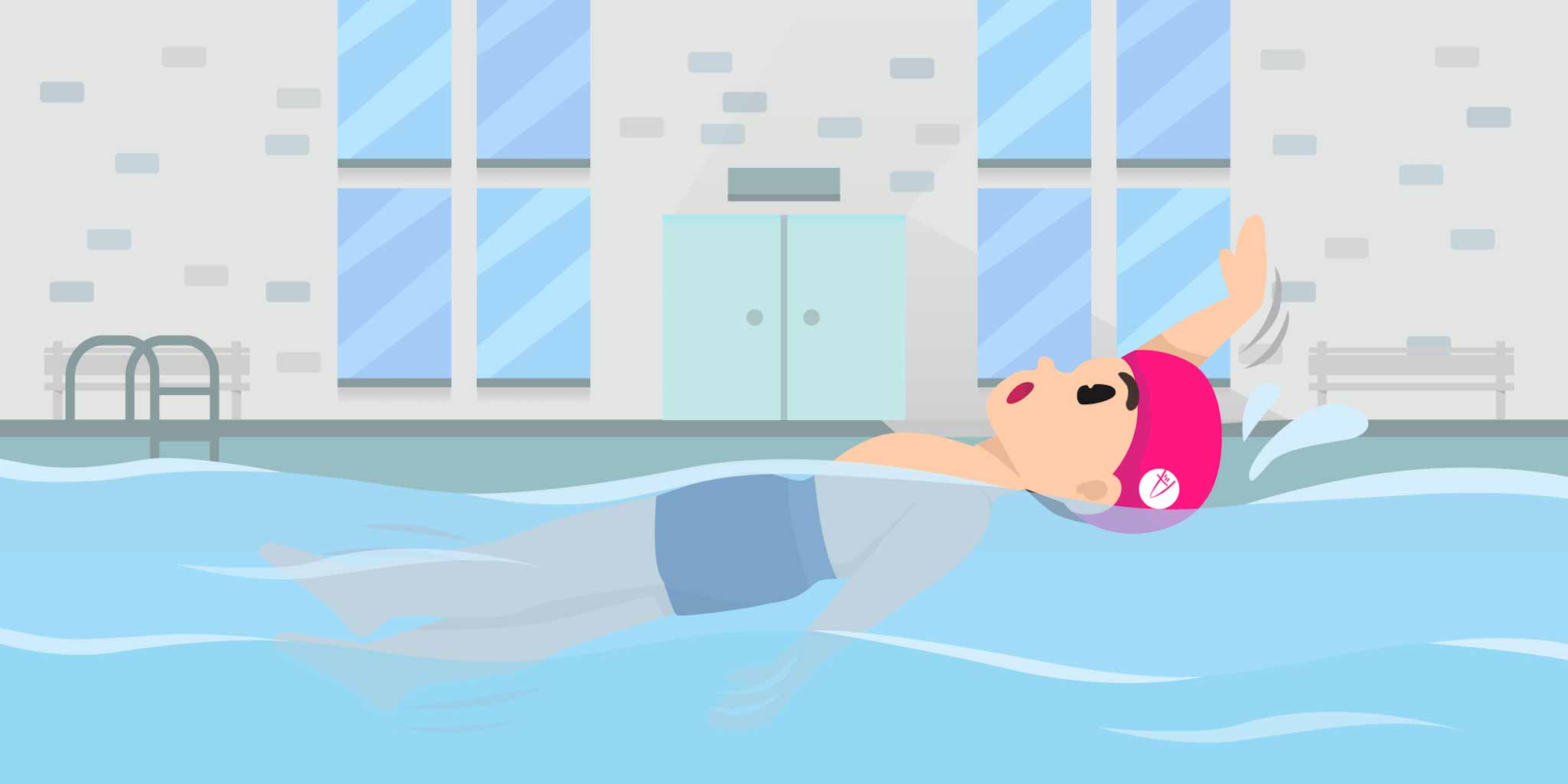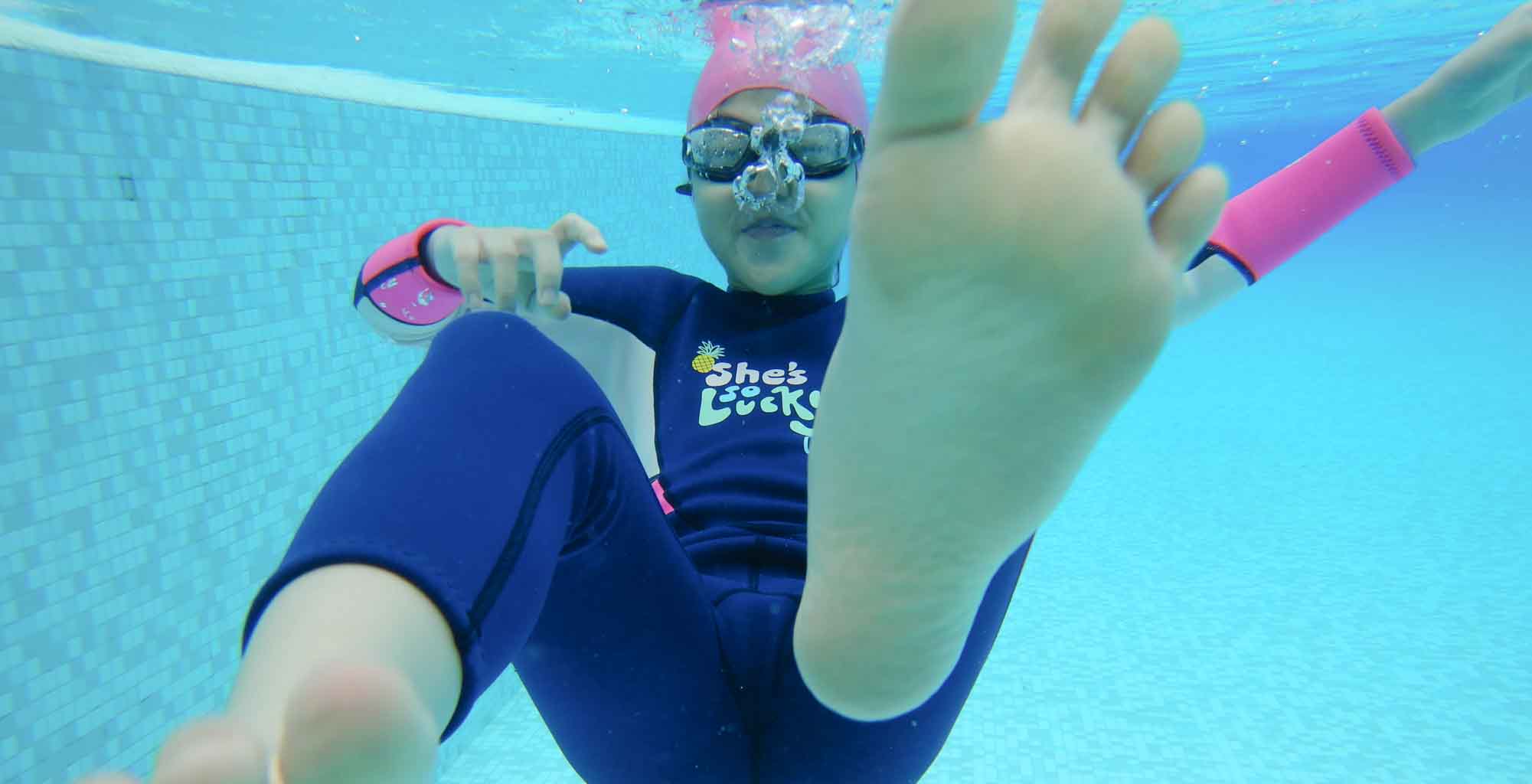Backstroke Technique Improvement

Understanding Backstroke
The arm movements used in the backstroke, also known as the back crawl, are alternate and opposite. The other arm rebounds above the water from the hip to the overhead position as the first arm pulls through the water from an overhead position to the hip.
The legs execute a flutter kick identical to the one employed in the front crawl.
As its name suggests, the backstroke is the only one of the four competitive swimming strokes that is performed on the back.
Here are a few progressive ideas for refining your backstroke technique to guarantee you get the most out of your pool time.
On The Water’s Surface.
- When working on your backstroke, keep your body as flat as possible to be streamlined with the water, with a slight slope down to the hips to keep the leg movement underneath.
- Allowing your hips to descend too low can slow you down; instead, keep your body close to the water’s surface.
- Your neck should be relaxed, and your head should be still. Holding your head too high strains your neck and slows you down in the water.
- The water should cover your ears, and your eyes should look up and back.
- Similarly to the front crawl, build momentum by moving your shoulders and hips. As one arm emerges from the water, the other begins the propulsive phase beneath the surface.
Arm Action
- As your arm emerges out of the water, lead with your thumb. The movement of the shoulders should lift the arm out, not the other way around.
- Your little finger should be the first to enter the water, with your arm straight and palm pointing outwards. Before entering the water, your arm should pass by your ear between your head’s shoulder and center lines.
- Pulling your hand immediately after it enters the water will cause resistance.
- Instead, move your hand out and down until it is in line with your upper chest and shoulders, with your arm bent.
- Turn your hand so that the palm faces your feet. Then, push through the water until your arm is fully bent at the thigh and ready to be raised by turning your shoulders.
Kicking
- Keep your legs close together and kick with your hips, not your knees.
- On the downbeat, keep your ankles loose and your knee slightly bent.
- Kick as hard and as quickly as you’re comfortable. Sprinters can kick up to six beats every arm cycle, whereas longer-distance swimmers use less.
Breathing
- As much as possible, avoid holding your breath. Every time an arm completes a full cycle, a breath is normally taken—experiment with breathing in as one arm passes your ear and out as the other arm passes.
- A steady breathing pattern will help your stroke rhythm.
Turning
- As you get closer to the wall, swivel your torso to the front and bring both arms to a halt at the thigh.
- Underwater, perform a forward somersault and put your feet on the wall with your knees open.
- Stay on your back, straighten your knees, and squeeze your arms to your ears, one on the other.
- Keep your form sleek and parallel to the water’s surface.
- Begin an alternating or dolphin leg kick beneath the water as your speed slows, and begin your initial arm motion while the torso is still somewhat submerged, bringing the head to the surface.
ROUTINES FOR BACKSTROKE
DRILLS FOR BODY POSITIONING
Learning to float properly on the back is the first step in mastering the backstroke. Proper spinal alignment and core tension increase back comfort and can help with backstroke performance. The following backstroke body position drills aim to achieve positive backstroke buoyancy, from which a good backstroke can be created.
Float On the Spine
THE OBJECTIVE OF THE DRILL
- Obtaining a favorable backstroke floating position
- Core tension and stability that is effective
- Begin by sitting comfortably on your back.
HOW TO PERFORM THIS DRILL
Step 1: Lie horizontally in the water, face up, without moving your arms, with your head leading.
Step 2: Pay attention to how your spine impacts your floating. To begin, curve your spine so that your knees are close to your chest and your hips are low as if you were sitting in water. You’ll notice that you’re having difficulty floating in this position. Your face may even become submerged.
Step 3: Return to a horizontal position in the water, face up, and concentrate on your spine. Arc your back such that your belly button is the highest point on your body. Attempt to keep it above the water. Observe how your face submerges, or nearly submerges, in the water. Your legs may sink as well.
Step 4: Lie horizontally in the water, face up this time. Pay attention to your spine. Make sure it’s as straight as possible. Straightening the natural bends in the small of the back and at the neck is part of this. Rotate your pelvis forward and force the back of your head into the water to do this. Take note of how you clench your abdominal muscles while relaxing your neck. Also, take note of how your body floats more horizontally. This is an advantageous floating position to create a good backstroke stroke.
Step 5: Repeat numerous times until you feel like you’re balancing on your spine.
CHART OF DRILL FEEDBACK
Problem: My legs continue to sink.
Modification: Learning to rotate your pelvis forward is even more vital if you have heavy legs. Float on your spine while contracting your abdominal muscles.
Problem: I’m not sure if my spine is straight.
Modification: You can test it by standing against a wall and pressing every inch of your spine into it. Try to side your hand between the wall and the small of your back. If you are successful, tilt your pelvis more forward to close this gap. Next, inspect behind your neck in the same manner. There should be no space. Take the time to evaluate the muscles you are using to produce your straight spine, and then replicate it in the water.
Problem: The issue is that doing so raises my hips above my belly button.
Modification: Yep, you read that correctly. You might feel like an elongated banana on the front of your body. Nevertheless, in the backstroke, you float on your spine, which should be straight.


